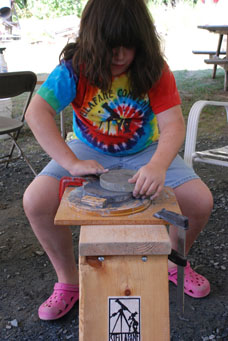Are machine-made telescope mirrors better than those made my hand?

Richard Koolish
In general, no. Making a telescope mirror is a two-step procedure. First you generate and refine the curve in the glass, and then you carefully modify that curve, in the process known as figuring, to give the mirror’s polished surface the necessary paraboloidal shape. Machines are great for quickly generating and refining the glass blank, but typically they don’t do a good job when it comes to figuring.
What may seem to be a virtue — that machines are consistent and offer repeatable performance — is in fact a liability. Making the mirror slide back and forth on the polishing lap over and over, exactly the same way, produces bad zones and rough optical surfaces. Random stroke variations, which come so naturally to human beings, produce the smoothest surfaces but are very difficult to replicate in a machine. For this reason, hand-figured mirrors are usually better. That said, there are some low-volume commercial operations that produce superb mirrors with machines operated by skilled and experienced opticians.
— Gary Seronik
 0
0
Comments
You must be logged in to post a comment.